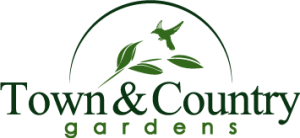Raspberries
Raspberries
Growing your own raspberries is EASY!
Raspberries are one of the most rewarding fruits you can grow at home—sweet, nutritious, and perfect for fresh eating, freezing, or making into jam. With just a little care at planting time, your raspberry patch can thrive for many years. Proper planting is the key to strong, productive canes that will reward you with abundant harvests season after season. Follow these simple steps to give your raspberries the best possible start and set the stage for healthy growth and delicious fruit.



Raspberry Varieties
Summer bearing- Produce only during July on two-year-old canes.
Everbearing- Produce in July on 2-year-old canes and again in Sept./Oct. on first year canes. Some gardeners choose to cut all canes to the ground in late fall each year. This sacrifices the summer crop, but makes pruning easy.
Hardiness Zone- Zone 3: Hardy to -40 deg. Zone 4: Hardy to -30. Zone 5: Hardy to -20 deg.
Pollinating- All raspberries are self pollinating, meaning you only need one variety to produce fruit. There is no harm in planting different varieties near one another.
Raspberry Varieties
Summer bearing- Produce only during July on two-year-old canes.
Everbearing- Produce in July on 2-year-old canes and again in Sept./Oct. on first year canes. Some gardeners choose to cut all canes to the ground in late fall each year. This sacrifices the summer crop, but makes pruning easy.
Hardiness Zone- Zone 3: Hardy to -40 deg. Zone 4: Hardy to -30. Zone 5: Hardy to -20 deg.
Pollinating- All raspberries are self pollinating, meaning you only need one variety to produce fruit. There is no harm in planting different varieties near one another.

| Variety | Type | Zone | Description |
|---|---|---|---|
| Canby | Summer Bearing | 4 | Prime Ark: (zone 4/5) Primocane variety that will grow a cane and produce fruit during the same growing season (similar to everbearing raspberries). Medium-large fruits from mid to late summer through fall. Upright thorny canes. |
| Caroline | Everbearing | 4 | Moderate summer crop with a heavier fall crop. Large, dark red berries. Excellent flavor, rich and intense. Good for fresh eating, freezing, canning, and preserves. Very productive. Fall harvest begins in September in east Idaho. |
| Fall Gold | Everbearing | 4 | Extremely sweet, excellent for fresh eating, canning, and preserves. Large golden berries are not bothered by birds. Fall harvest from new canes begins in September in east Idaho. |
| Prime Ark | Everbearing | 4/5 | Primocane blackberry variety that will grow a cane and produce fruit during the same growing season (similar to everbearing raspberries). Medium-large fruits from mid to late summer through fall. Upright thorny canes. |
Canby
- Type: Summer-bearing
- Zone: Hardy to Zone 4
- Fruit: Large, firm, bright red berries with a mild, sweet flavor.
- Canes: Nearly thornless (one of its standout features), making picking much easier.
- Growth Habit: Upright, vigorous, and productive.
- Notes: Performs best with good air circulation; excellent for fresh eating, freezing, and preserves.
Caroline
- Type: Everbearing (produces a moderate summer crop and a heavier fall crop)
- Zone: Hardy to Zone 4
- Fruit: Large, dark red berries with a rich, intense flavor; excellent for fresh eating, freezing, canning, and preserves.
- Growth Habit: Vigorous and highly productive.
- Harvest: Fall harvest typically begins in September in east Idaho.
Fall Gold
- Type: Everbearing
- Zone: Hardy to Zone 4
- Fruit: Large, golden berries with an extremely sweet flavor; birds rarely bother them.
- Growth Habit: Reliable producer with consistent yields.
- Harvest: Fall harvest from new canes typically begins in September in east Idaho.
Prime Ark
- Type: Everbearing
- Zone: Hardy to Zones 4–5
- Fruit: Medium to large berries produced on primocanes; good yield from mid to late summer through fall.
- Growth Habit: Upright, thorny canes.
- Harvest: Produces fruit on first-year canes (similar to everbearing raspberries), allowing for an extended harvest window.
Weed Control
Weeds (including quack grass) can be prevented in raspberries by applying Casoron granules in late fall or early spring. Be sure to apply after any cultivation, but before new shoots appear in spring. Grasses that come up in the spring can be controlled with Fertilome Over-the-Top II mixed with Sticker-Spreader. Spray in mid April according to directions and again two weeks later for best results.
Whether you’re planting for the first time or expanding an established patch, these steps give you a solid foundation for healthy raspberry canes and bountiful fruit. From spacing and planting depth to feeding and watering, each stage plays a vital role in setting up your raspberry bed for long-term success. With care and patience, your patch will reward you each year with delicious berries—whether in midsummer, early fall, or both.


